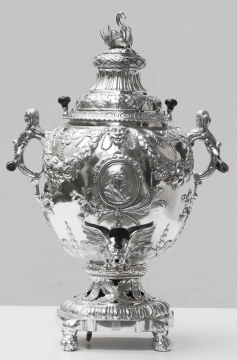Material / technique:
Embossed silver, Mechelen hallmark, Camberlyn coat of arms engraved on the foot
Dimensions:
Height 59 cm, weight 7 kg
Type of acquisition:
Acquired by the Comte Thierry de Looz-Corswarem Fund
Year of acquisition:
2022
Depository institution:
Art & History Museum, Brussels
